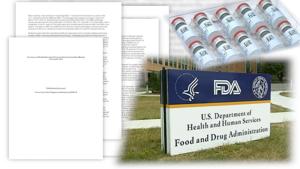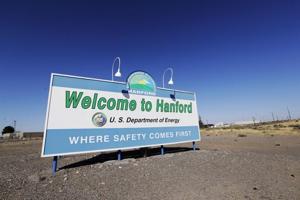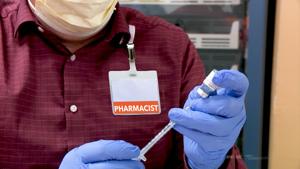
As some of the last statewide mask mandates in the U.S. near an end, decisions about whether students and teachers should continue to wear masks in school are shifting to local leaders, who are caught in the middle of one of the most combustible issues of the pandemic.
“Unfortunately, this is an issue where you are not going to make everybody happy,” said Jeffrey Solan, school superintendent in Cheshire, Connecticut. “We can’t allow those individual passions to decide the debate.”
The question of masks in schools has been so contentious in much of the country that school board meetings have devolved into shouting matches, scuffles and arrests. Protesters have shown up outside administrators’ homes. And slates of pro- and anti-mask candidates have run for school board seats in an attempt to shape policies.
In the hours after Connecticut’s governor announced the state’s mask requirement would end later this month, Solan was peppered Monday with messages from families who feel masks are critical for protecting students and from others who have long been opposed.
If the decision had to be made right away, he said, his district in New Haven’s suburbs would continue to require masks, based on metrics developed with local health officials, including vaccination and infection rates.
Some school officials around the country welcomed state-imposed mandates for sparing them from having to make unpopular decisions, especially early in the pandemic. But many superintendents say they now have the tools to decide whether masks should be required, and they welcome the ability to adapt as needed.
The governors of Connecticut, Delaware, New Jersey and Oregon this week announced plans to lift mask requirements in schools by the end of February or March, as COVID-19′s omicron surge subsides. Massachusetts joined the list on Wednesday.
The states are among a dozen that have kept mask mandates in schools as others have dropped them, according to the nonpartisan National Academy for State Health Policy.
The Centers for Disease Control and Prevention still recommends masks for students and staff inside buildings, leaving district leaders to weigh the federal guidance against what they have seen in their own schools and heard from the parents, teachers and students.
Some districts, including Philadelphia; Wichita, Kansas; and Albuquerque, New Mexico, have continued to require masks despite the end of state mandates.
Many others have made them optional.
West Baton Rouge, Louisiana, Superintendent Wesley Watts said it was comforting at the outset that all schools required masks, but that was then. His district stopped requiring masks at the end of October, once school systems were allowed to opt out of a state mandate as long as they enforced quarantines in line with CDC recommendations.
“Just knowing the pulse of our community, they were ready for it,” Watts said.
Superintendent Joshua Stafford said his Vienna, Illinois, school district made masks optional this week following a judge’s ruling invalidating the state’s mandate. The state has appealed.
“We’re two years into this thing. So we do have some data, we have some trend history, we have some things that we can look at,” he said.
In his Illinois community — 20 minutes from Paducah, Kentucky, and more than five hours from Chicago — Stafford said hardly anyone still wears a mask. That, along with data showing minimal spread in district schools and the problem of masks muffling voices and hiding facial expressions in class, persuaded him to switch to a mask-optional policy.
“On the other side of that coin, you also have those who suffer from autoimmune disorders, other extenuating health circumstances, and that has to be weighed in the balance of this global pandemic and the response to it as well,” Stafford said, “and so it’s not an easy decision or a light decision.”
School superintendents generally prefer flexibility to make their own decisions on mask requirements based on infection numbers and vaccination rates, said Dan Domenech, executive director of the School Superintendents Association.
“What we’ve seen in this country is that the pandemic and the level of infections is very much dependent on where you are,” he said. “If you create a blanket situation that says everyone is going to have to do this, wear a mask or not wear a mask, you’re not taking into consideration the differences that exist within your own region.”
In a number of states, including Maryland and Virginia, he said, districts have been dropping and reimposing mask requirements to adapt to the latest virus numbers.
So how do superintendents deal with complaints from all sides about masks in schools?
“That’s why superintendents are leaving the profession in numbers, because they’re caught in the middle. They’re damned if they do, they’re damned if they don’t,” Domenech said.
In Oregon, he said, three superintendents were fired for enforcing the state’s school mask mandate that their local school boards opposed.
In New York, Democratic Gov. Kathy Hochul said Wednesday the state’s school mask mandate will remain in place for now and will be re-examined in early March.
Hochul said that will allow time for COVID-19 testing and analysis following districts’ upcoming winter breaks. She said school leaders she has consulted have been willing to step out of the decision-making and let the state take the lead on analyzing infection rates and other data.
“They prefer that it be a state on-or-off requirement,” she said. “It is challenging for an individual school board or a school superintendent.”
A group of 13 rural New York superintendents last week asked that local control be fully restored “because the needs of each region differ, and we are fully capable of navigating the remainder of the school year with input from our local (departments of health) as needed.”
———
Associated Press writers Michael Melia in Hartford, Connecticut, and Marina Villeneuve in Albany, New York, contributed to this report.
———
Follow AP’s coverage of the pandemic at https://apnews.com/hub/coronavirus-pandemic.



